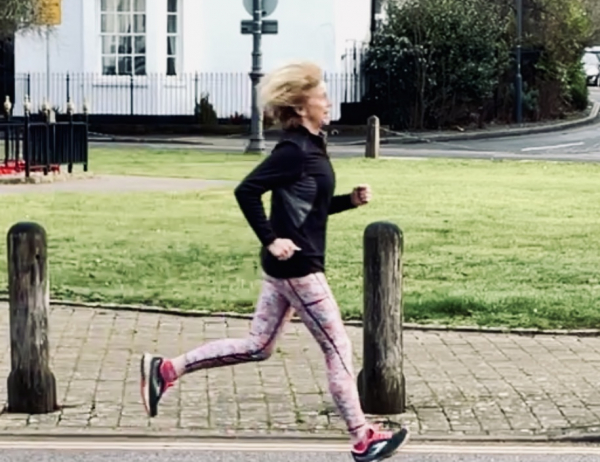- Poor Posture
While many people are aware that their posture is poor they simply don’t know how to deal with it, meaning that often it is not addressed until it starts to give us pain.
Our posture is defined by our habitual positions - “You are what you do”.
We recommend taking a good look at your work station, even if it has been checked; be honest about whether its current set-up is working for you. If when sitting perched on the edge of your chair your feet are reaching the floor that is a clear sign that the set-up is not working for you.
At the Physiotherapy Clinic we can assess and check whether the increased pain is being generated by an old injury or by an underlying problem. We can treat the pain whilst showing you a daily routine that will strengthen your postural muscles. As a result, over a period of weeks, you will notice the difference in the way in you hold yourself.
Here are some simple tips that you can do yourself to start improving your posture:
- Take regular breaks, stand up and move around.
- Gently roll your shoulders.
- Make sure that your lower back and feet are supported, and you are sitting facing forward.
- Ask your employer to carry out a Work Station Assessment
- Muscle Tension
Tension around the neck and shoulders can often be put down to stress, while it is true that feeling stressed can manifest itself as increased tension, there are many other causes which can cause tension in this area. For example, working on a computer or watching TV for prolonged periods of time can put a strain on your neck.
The right guidance can get to the root of these causes, helping you to manage the symptoms more effectively, without depending on prescription drugs or regular massage.
Your physiotherapist will carry out an in-depth examination to ascertain whether the muscles are tight and whether there is underlying joint stiffness. After they have relieved your pain they will guide you through simple stretches and movements which you can do yourself to manage the pain.
Get ready to say goodbye to pain!
- Frozen Shoulder
Frozen shoulder deserves a mention.
It is associated with acute pain and marked loss of movement. This term is frequently used to describe a painful stiff shoulder. However frozen shoulder can be diagnosed with the help of x-ray to rule out other conditions.
With our guidance we will be able to correctly diagnose and advise you on how to manage the condition so as to recover as much movement as possible. Frozen shoulder presents with two distinct phases and with expert care from your physiotherapist the evidence points to some recovery during the second phase within 3 to 4 months.
With specific examination, we can identify where the capsule is tight and make sure we direct your exercise to target these areas. If you do not achieve these shared goals we will refer you for further investigations where certain procedures can be effective in true, frozen shoulder.
- Whiplash
Whiplash injury has proved a controversial topic due to many insurance claims from people involved in car accidents.
The symptoms of pain associated with whiplash can be prolonged, and pain is often felt in the head, neck and arms, because of damaged structures within the cervical spine including the deep musculature. Up to 75% of people injured with whiplash complain of dizziness which can be attributed to weakness in the neck muscles. This weakness is thought to contribute to the sensation of the neck feeling unstable as well as disturbance to eye movement control.
Your physiotherapist will work to aid recovery and prevent reoccurrence by delivering treatments that focus on relieving the pain and restoring movement within the damaged tissues. Patient specific exercises can be prescribed to retrain the weakened muscles and improve visual disturbances. Another treatment which we recommend is the use of pressure biofeedback units, which can be loaned out for use at home, to strengthen the affected muscles.
Research has shown that this approach markedly decreases the risk of chronic neck pain, reduces the use of medication and helps to prevent recurrences.
- Rotator Cuff and Sport
The rotator cuff wraps around the shoulder joint and is most frequently injured by those who play sports which involve over head arm activities. Repetitive overhead movement combined with very high loads during the acceleration and deceleration phase of the arm movement contribute to the cause.
It is essential that the factors that lead to the injury are identified quickly to bring about recovery. For younger players weakness in the rotator cuff or within the kinetic chain can lead to compensatory strategies and pain in the shoulder at the point of stress. We are well placed to liaise with the coaches or PT trainers based at the Gosling Sports Park.
In older players there may be the additional complication of degenerate joint changes, tears, thickening and inflammation of tendons and bursae that have been subjected to recurrent loading in and around the shoulder, as a result of the intensity of their sporting activities.
Analysis of the shoulder movement in the context of their sport is essential in restoring function and a return to competition fitness.
Never ignore pain, it is there to warn you that something is not quite right.
- Tennis Elbow
The term tennis elbow refers to pain experienced on the outside aspect of the elbow, although named tennis elbow only 5-10% of racquet players are affected by it. In the UK around 3% of the population experience tennis elbow and they are generally between the ages of 40 and 50.
The pain is usually related to activity involving combined loading of the wrist and elbow. The pain could be caused by a significant incident i.e. pain after hitting a late backhand tennis stroke. More commonly however it is an overuse injury due to repeated grasping, lifting or holding objects with the elbow straight. For example, using a mouse with the elbow straight, changing into first or third gear, or painting.
These activities can result in damage to the tendon as the muscle pulls your wrist back.
To begin with physiotherapy can alleviate the symptoms by directly treating the local inflammation. There are a variety of ways to do this, including:
- Acupuncture
- Electroacupuncture
- Soft tissue massage
- Kinesio taping techniques
Most importantly your physiotherapist can work out what are the causative factors and work out ways that you can avoid or reduce them, as well as advising you on ways to strengthen the forearm.
We recommend:
- Purchasing a tennis elbow strap from a sport shop to provide additional support
- Reducing any activity which irritates the condition
- Take anti-inflammatories if the pain is constant and try to rest as much as possible
A tennis elbow can be slow to settle but 70 to 80% of cases settle within 1 year.
- Muscle Tears
If you are experiencing persistent cramp type pain or niggles in a muscle then this could be indicative of a minor tear rather than simple muscle soreness. Following heavy exercise muscle soreness will settle however with a tear the discomfort will persist and worsen if you continue to exercise.
Muscle tears can be graded by severity. The type that pulls you up sharply and makes it impossible to continue is likely to be more severe involving the tearing of several bands of muscle fibres. These, more severe, tears take longer to heal and therefore create more time to decondition and develop adaptive changes both to the muscle itself and neighbouring structures.
A physio will be able to assess the degree of injury which will enable them to both treat and advise you on the necessary progression back to full fitness. As with a simple injury early reduction in load and activities combined with the RICE approach(link to RICE page), will help to manage the pain.
Getting back into exercise and a progression of loading can start as soon as the pain settles but with more severe injuries this may need to wait until 5 to 10 days after injury. Your physio can treat you by grading the level of activity specifically, resulting in you making a quicker recovery
What will your physio do?
- Assess the degree of injury
- Alleviate pain through physiotherapy techniques such as electro acupuncture, ultrasound, manual hands on treatment and kinesio taping
- Start you on a level of activity suitable to your current level of recovery
- Advise you on when and how to stretch - to help promote good healing within the damaged muscle fibres
- Progress you with a bespoke exercise programme at the various stages of recovery.
- Liaise with coaching staff or your GP.
If indications dictate a very severe problem, your physio will refer you to the most appropriate local consultant to scan and assess the degree of damage.
- Arthritis & Osteoarthritis
Arthritis and Osteoarthritis isn’t a condition that you should fear, because in the right hands you will be able to manage and maintain an active life. A recent article published by the British Medical Journal found that exercise is an effective way to control pain and improve function – especially with lower-limb arthritis.
Our team of physios treat this condition daily, so wherever it affects you in the body we’re able to treat the pain, advise you whether it’s best to rest or whether you are ready to exercise.
Your physio can assess and supply joint supports where it is beneficial. If you need any advice, then please do not hesitate to give us a ring.
There is plenty to read about this condition on the internet, a very good reference is arthritisresearchuk.org
- Colles & Wrist Fractures
A colles fracture is a break in the radius bone of the wrist and accounts for around a quarter of all broken limbs, often caused following a fall on an outstretched hand.
Treatment initially involves immobilisation in a plaster cast or splint. Your wrist may be stiff and painful on removal and this is a good time to commence Physiotherapy.
Your physiotherapist can help to regain movement with careful joint mobilisations and exercises to help improve the strength and function of the wrist and hand.
- Duputyrens Contracture
A condition which affects the hands causing one or more fingers, or thumbs, to bend into the palm of the hand. It is not normally painful, but the thickening can progress causing a severe contracture or inability to straighten the digit. It is a common condition often occurring later in life with men more affected than women.
In severe cases, surgery is required to remove the shortened tissue. Treatment can vary depending on your surgeon, however specialised hand physiotherapy is essential to help regain full movement with a splint made to measure if appropriate. All of this can be done here, by Kerris Clark at the Physiotherapy Clinic who is a specialist in hand therapy.
- Carpal Tunnel
This condition is caused by pressure on a nerve at the wrist joint. It can produce pain around the wrist or hand and may include other symptoms such as :
- Pins and needles and/or numbness
- Weakness of the hand
- Dryness of the skin
One or both hands can be affected, with symptoms often worse at night.
A physiotherapy assessment can help confirm a diagnosis and treat accordingly, occasionally a splint may be recommended to help with night symptoms.
In more severe cases a referral to a specialist may be advised for possible steroid injection, nerve conduction studies or an operation to release the pressure on the nerve
- Shoulder Pain
There are many underlying causes for developing shoulder pain:
- a change in the way you load your shoulder- training in the gym, DIY, playing sport.
- underlying joint problems
- fluctuations in blood sugar levels with diabetes
- trauma
- metabolic and genetic predisposition
- underlying health predisposition
- rotator cuff injuries
And many more…
In the absence of trauma, you may simply have a shoulder problem which is painful due to localised weakness and a tightness in one small area. As soon as there is less than 70% rotation range in any direction, there is a complete alteration in joint mechanics and muscle function- this can be the start of stiffness and pain.
The good news is that, even if there is a full rotator cuff tear, with physiotherapy management over 75% of patients will make a significant recovery. The recovery can happen and you must allow time for the best outcomes.
We are trained to do the detective work and seek out the root cause of your shoulder problem. We have the experience to know if physiotherapy will help you if not we can direct you for the right medical opinion.
At the Physiotherapy Clinic you can expect a patient specific exercise program, and if pain is affecting your ability to exercise, then we can combine this with other treatment modalities.
- Back Pain
Back Pain is very common and is often described as non-specific or a mechanical backpain. Often it is not serious and can get better with an active approach. Although there may be a period of time where you are having to manage your symptoms and avoid movements which are significantly painful, a return to normal activities and exercise, as soon as you can, will help with your recovery.
However, there are occasions when your back pain is coming from a more serious cause, in this instance you will benefit from being seen and diagnosed quickly so the appropriate course of action can be taken. These more worrying symptoms may be
- recurrent pain that is more widespread and just isn’t improving
- worsening pain especially at night or when you lie down
- chills or fever since the onset of your back pain
- loss of control or unsteadiness in your legs.
At The Physiotherapy Clinic, our experienced team of physiotherapists will carry out a thorough assessment and screen you for any symptoms that may be a cause for concern. We can help to identify the root cause of your back pain before developing a personalised treatment plan that may include a combination of exercises, manual therapy, and education about posture and movement patterns or if required refer you on to your GP or an appropriate specialist.
If you experience back and leg pain combined with changes to the control of your bladder or bowel, you should seek emergency help from the accident and emergency unit.
Our physiotherapists also provide advice to help you manage your back pain at home. By taking a proactive approach to back pain, you can reduce the risk of further injury.
We are committed to helping you on the path to recovery from back pain.
- Sciatica
Sciatica is often used to describe a pain in the leg, but it generally originates from the lumbar spine where pain can be generated from irritation of the small nerve roots that make up the sciatic nerve, hence the name. It can present as burning pain, pain travelling down the leg, electric shocks, tingling, pins and needles or even numbness and weakness.
These are but a few symptoms that patients describe and, in some cases, can lead patients to think that a pain which is actually originating from within the leg itself is sciatica when indeed it is not and this will require a very different therapeutic approach,
The good news is that team at the Physiotherapy Clinic can do an in-depth assessment and advise you on the likely cause of your symptom. They will give you a comprehensive explanation on how to manage your condition and in most cases can use techniques that will give pain relief, as part of your recovery.





_600_462_s_c1.png)